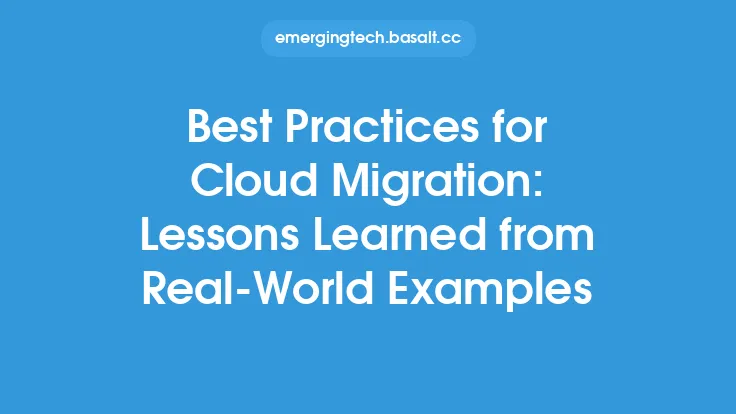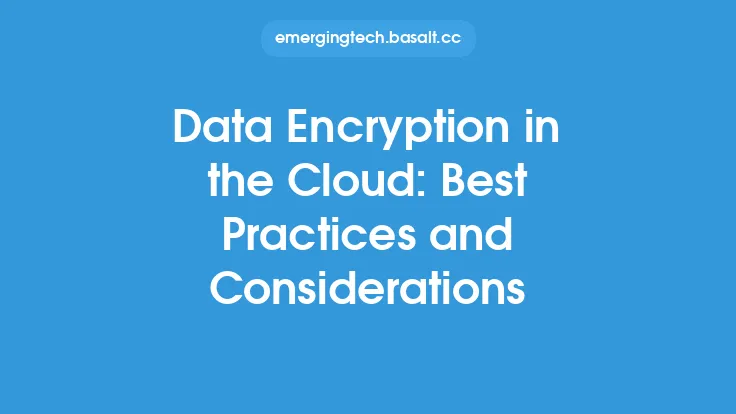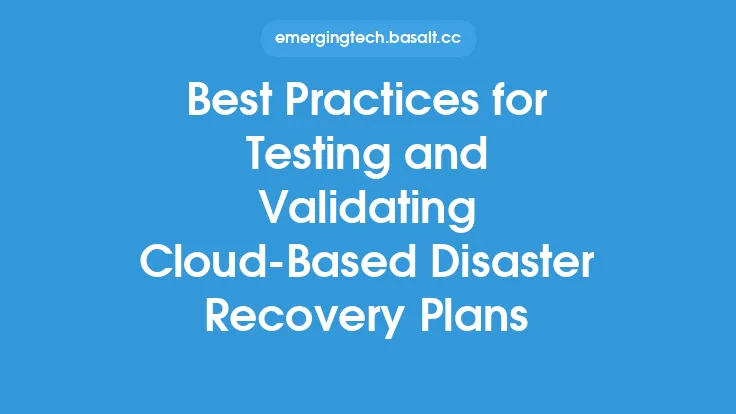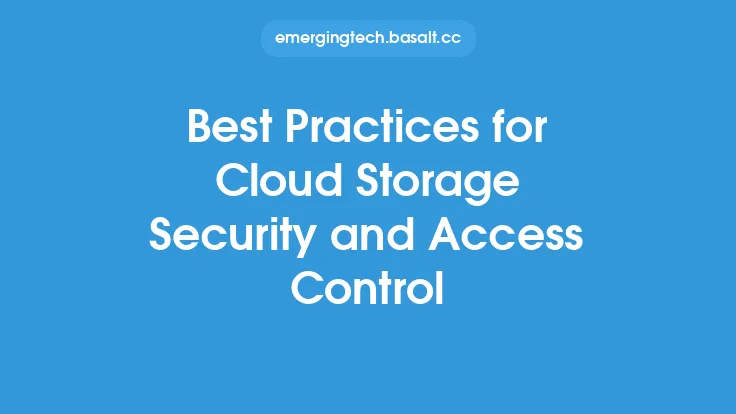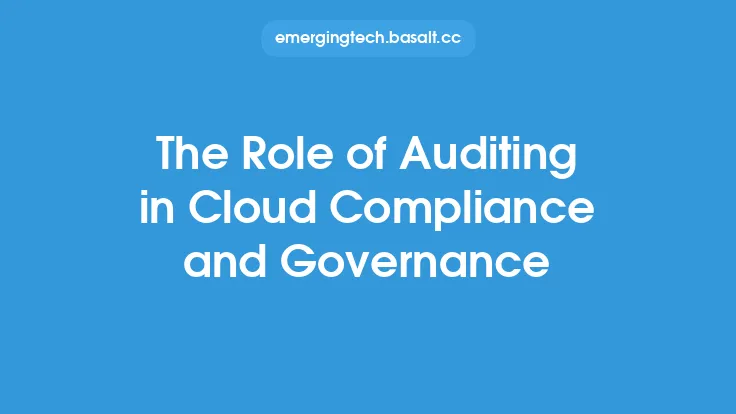As organizations increasingly move their IT infrastructure to the cloud, the need for effective governance has become a top priority for IT leaders. Cloud governance refers to the set of policies, procedures, and standards that ensure the secure, compliant, and efficient use of cloud computing resources. In this article, we will explore the best practices for IT leaders to establish and maintain effective governance in the cloud.
Introduction to Cloud Governance
Cloud governance is a critical component of any cloud computing strategy. It involves defining and implementing policies, procedures, and standards that ensure the secure, compliant, and efficient use of cloud computing resources. Effective cloud governance enables organizations to minimize risks, ensure compliance with regulatory requirements, and optimize the use of cloud resources. IT leaders must establish a cloud governance framework that aligns with the organization's overall IT strategy and goals.
Key Components of Cloud Governance
A comprehensive cloud governance framework consists of several key components, including:
- Cloud security: This involves implementing measures to protect cloud resources from unauthorized access, use, or disclosure. Cloud security measures include authentication, authorization, encryption, and access controls.
- Compliance: This involves ensuring that cloud resources are used in compliance with relevant laws, regulations, and industry standards. Compliance requirements vary by industry and jurisdiction, and IT leaders must ensure that cloud resources are configured to meet these requirements.
- Risk management: This involves identifying, assessing, and mitigating risks associated with the use of cloud resources. Risk management involves implementing measures to prevent, detect, and respond to security incidents and other risks.
- Cost management: This involves optimizing the use of cloud resources to minimize costs. Cost management involves implementing measures to monitor and control cloud usage, optimize resource allocation, and negotiate contracts with cloud providers.
- Service management: This involves ensuring that cloud resources are delivered and supported in a way that meets the needs of the organization. Service management involves implementing measures to monitor and manage cloud services, ensure service availability and performance, and provide support to users.
Best Practices for Cloud Governance
To establish and maintain effective cloud governance, IT leaders should follow these best practices:
- Develop a cloud governance framework: This involves defining and documenting policies, procedures, and standards for the use of cloud computing resources.
- Establish a cloud governance team: This involves assigning responsibility for cloud governance to a team of individuals with the necessary skills and expertise.
- Implement cloud security measures: This involves implementing measures to protect cloud resources from unauthorized access, use, or disclosure.
- Monitor and manage cloud usage: This involves implementing measures to monitor and control cloud usage, optimize resource allocation, and negotiate contracts with cloud providers.
- Ensure compliance with regulatory requirements: This involves ensuring that cloud resources are used in compliance with relevant laws, regulations, and industry standards.
- Conduct regular risk assessments: This involves identifying, assessing, and mitigating risks associated with the use of cloud resources.
Cloud Governance Tools and Technologies
A range of tools and technologies are available to support cloud governance, including:
- Cloud management platforms: These platforms provide a centralized interface for managing cloud resources, including provisioning, monitoring, and security.
- Cloud security gateways: These gateways provide an additional layer of security for cloud resources, including encryption, access controls, and threat detection.
- Compliance management tools: These tools provide a framework for managing compliance with regulatory requirements, including risk assessment, audit, and reporting.
- Cost management tools: These tools provide a framework for managing cloud costs, including usage monitoring, cost allocation, and budgeting.
- Service management tools: These tools provide a framework for managing cloud services, including service desk, incident management, and problem management.
Challenges and Opportunities in Cloud Governance
Cloud governance presents several challenges and opportunities for IT leaders, including:
- Complexity: Cloud governance involves managing a complex array of cloud resources, including infrastructure, platforms, and applications.
- Security: Cloud governance involves ensuring the security of cloud resources, including protecting against cyber threats and data breaches.
- Compliance: Cloud governance involves ensuring compliance with regulatory requirements, including data sovereignty, privacy, and security.
- Cost: Cloud governance involves optimizing the use of cloud resources to minimize costs, including negotiating contracts with cloud providers and managing usage.
- Innovation: Cloud governance involves enabling innovation and agility, including adopting new cloud services and technologies.
Conclusion
Effective cloud governance is critical for organizations that use cloud computing resources. IT leaders must establish a cloud governance framework that aligns with the organization's overall IT strategy and goals. This involves defining and implementing policies, procedures, and standards for the use of cloud computing resources, including cloud security, compliance, risk management, cost management, and service management. By following best practices and using cloud governance tools and technologies, IT leaders can ensure the secure, compliant, and efficient use of cloud computing resources.
